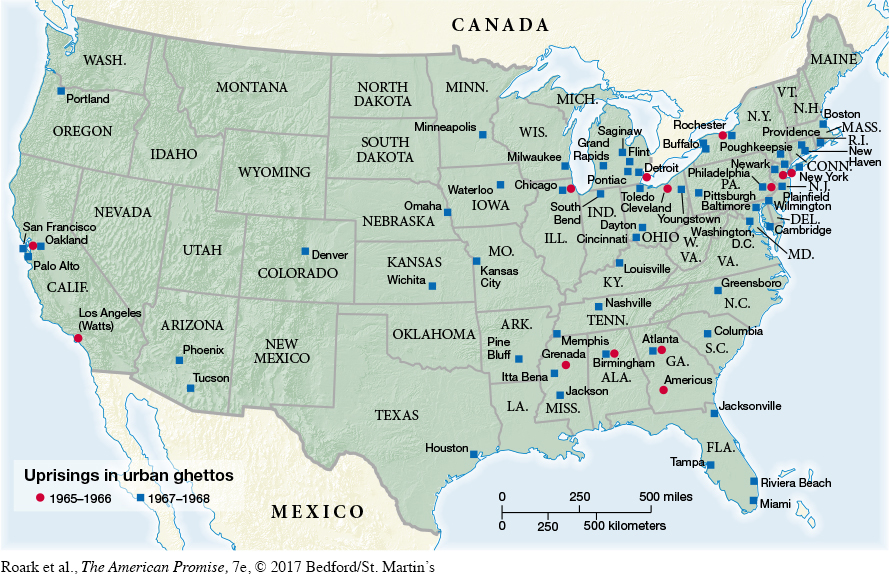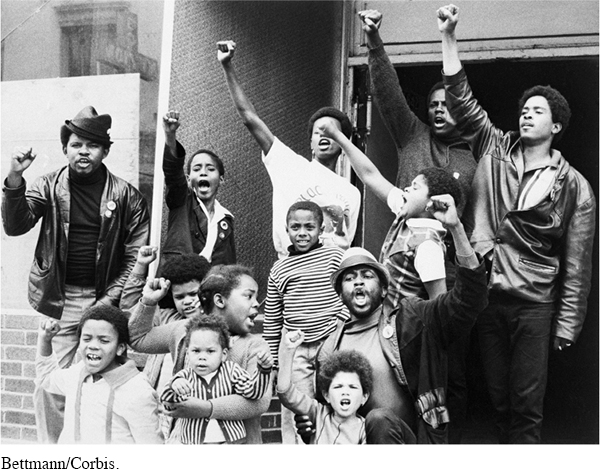The American Promise: Printed Page 814
The American Promise, Value Edition: Printed Page 738
The American Promise: A Concise History: Printed Page 842
Black Power and Urban Rebellions
By 1966, black protest engulfed the entire nation, demanding not just legal equality but also economic justice and abandoning passive resistance as a basic principle. These developments were not completely new. African Americans had waged campaigns for decent jobs, housing, and education outside the South since the 1930s. Some African Americans had always armed themselves in self-
The American Promise: Printed Page 814
The American Promise, Value Edition: Printed Page 738
The American Promise: A Concise History: Printed Page 842
Page 815The new emphases resulted from a combination of heightened activism and unrealized promise. Legal equality could not quickly ameliorate African American poverty, and black rage at oppressive conditions erupted in waves of urban uprisings from 1965 to 1968 (Map 28.3). In a situation where virtually all-

In the North, Malcolm X posed a powerful challenge to the ethos of nonviolence. Calling for black pride and autonomy, separation from the “corrupt [white] society,” and self-
The American Promise: Printed Page 814
The American Promise, Value Edition: Printed Page 738
The American Promise: A Concise History: Printed Page 842
Page 816The press paid inordinate attention to the black power movement, and civil rights activism met with a severe backlash from whites. Although the urban riots of the mid-
Martin Luther King Jr. agreed with black power advocates about the need for economic justice and “a radical reconstruction of society,” yet he clung to nonviolence and integration as the means to this end. In 1968, the thirty-

Although black power organizations captured the headlines, they failed to gain the massive support from African Americans that King and other leaders had attracted. Nor could they alleviate the poverty and racism entrenched in the entire country. Black radicals were harassed by the FBI and jailed; some encounters left both black militants and police dead. Yet black power’s emphasis on racial pride and its critique of American institutions resonated loudly and helped shape the protest activities of other groups.
The American Promise: Printed Page 814
The American Promise, Value Edition: Printed Page 738
The American Promise: A Concise History: Printed Page 842
Page 817REVIEW How and why did the civil rights movement change in the mid-